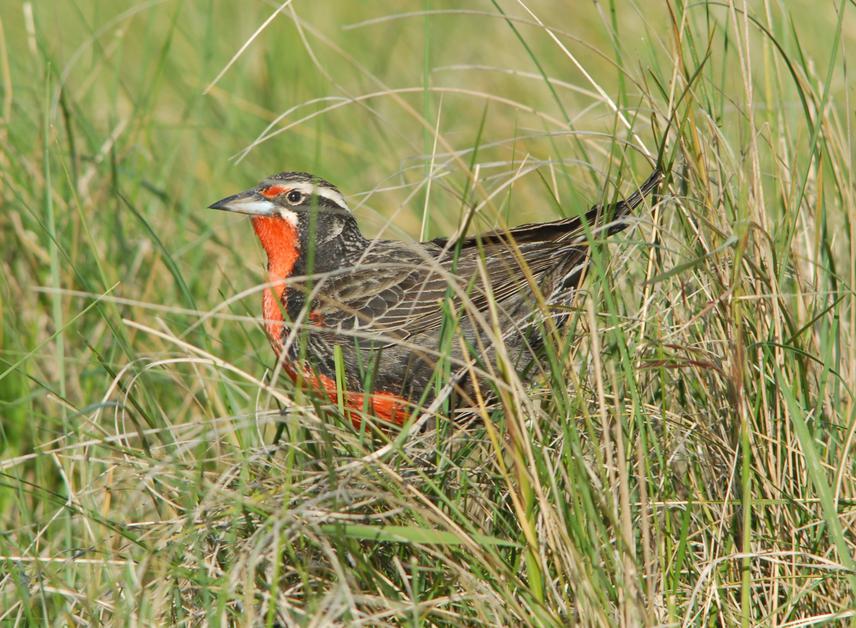Adrián Azpiroz
Other projects
29 Aug 2008
Pampas Meadowlark: Using a Flagship Species to Promote Conservation in the South American Grasslands I
7 Sep 2010
Pampas Meadowlark: Using a Flagship Species to Promote Conservation in the South American Grasslands II
12 Aug 2015
Pampas Meadowlark: Using a Flagship Species to Promote Conservation in South American Grasslands IV
This project focuses on the Pampas Meadowlark, a globally threatened bird. Proposed activities will combine research (population monitoring, colour banding, habitat management) and outreach work to strengthen grassland conservation outputs derived from previous phases of the project.

Pampas Meadowlark Male. © A. Azpiroz.
In 2004 and 2005 I conducted a study on grassland bird ecology as part of my PhD studies. This work resulted in the first assessment of native and altered grasslands as habitat for grassland birds in Uruguay. During this study, direct threats to bird populations were detected at one study site: the Arerunguá region. This area still harbours large expanses of native grasslands that provided high-quality habitat for several threatened birds.
During the last 5 years (in collaboration with other conservationists) I have combined education activities and research to improve the conservation status of grassland birds in this unique region. Research activities have focused on the Pampas Meadowlark, one of the most threatened grassland birds of the Pampas biome. This species has lost more than 90% of its historical range due to habitat alteration, and thus, represents a particularly suited model for grassland bird ecology research and conservation in the region. Concerning education activities, the Pampas Meadowlark is used as a flagship species to raise public awareness and promote grassland conservation. These activities have already resulted in tangible conservation outcomes such as the implementation of habitat management measures to favour grassland birds of conservation priority.
The new grant will be used to continue long-term grassland bird ecology studies and to characterize (determine population size and threats) two additional Pampas Meadowlark populations. Public awareness activities, focused on local communities will continue to build support for grassland conservation in the region. The Uruguayan government has recently identified a series of sites and species of conservation priority. These include the Arerunguá region and 11 threatened grassland birds that are found in this area. Scientific data produced by our project (i.e., ecological needs of grassland birds, key sites to protect, etc.) will be very useful for future management and conservation planning activities related to these government initiatives.